Leaderboard
Popular Content
Showing content with the highest reputation on 2018-02-28 in all areas
-
2 points
-
Actually it shouldn't. If a civilisation lacks citizen soldiers, they should have an alternative unit dedicated to military purposes in the early game. For Carthage for instance, this could be a local mercenary. The idea would be that they would generally field quality over quantity. As for the packing idea, maybe it might make some good trade offs, but realise that in the early game or most RTS games, the purpose of raiding is twofold: to disrupt the economy of the enemy and to kill units. Each second they spend not collecting resources is a gain for the raider, and every defending unit's death is to the attacker's advantage. Yes, loot is a point of it, but the primary purpose to begin with is simply to force idle time (Economic units not doing their said task.) The packing could take a fair amount of time. As reference: That silliness aside, obviously it shouldn't take too much time, but it would penalise players who do not properly scout and give the attackers a window in which no one is defending. Obviously, this case is for more complex suits of armour and makes the assumption that that a person would not work in heavy armour while carrying their weapons. You said that it would be too penalising, but it should penalise players whose soldiers have been caught with their pants down.2 points
-
Range sieges like bolt shooters and catapults are hard to capture when unpacked or deployed. Needs more units to do it. Better destroy it with few melee units. When not deployed it’s more quicker to capture with few units. Rams are not capturable afaik. Siege towers are capturable too but harder if units are garrisoned. Defense towers as well as structures that can be garrisoned are hard to capture too. Try to read the capture abilities of units and non organic military/structures to give you idea on strategy. My style is if the blue thing keeps on increasing back that means it has garrison and the units needed to capture has less ability to do the task. One good technique when playing against bots are the outposts. Seems to me that they are very hard to capture and the bots are always trying to capture it rather than destroy.2 points
-
@elexis Just tested, as long as you press Shift you keep getting warnings.2 points
-
2 points
-
Hey everyone, Several years ago I was considering creating a sci-fi RTS here in 0AD. Due to my other project taking up too much time, I sort of set it off to the side. After getting fed up with the Medieval 2 engine I'm considering porting that big project, Hyrule Total War to 0 A.D. now. I've started some preliminary work, porting a few of the static buildings over from Medieval 2 into 0AD: I just have a few questions before I make the decision: I thank anyone for their replies, and I hope I can come back to 0AD soon.1 point
-
I know you all guy have been waiting with holden breaths. I will synthesize some of Darcreavers ideas, along with comments and suggestions from others, and merge them with some concepts from my mod to propose a new gameplay for 0 a.d. I hope you guy like this. I commend you for reading all the way through. General Concept In general, most think there are structural problems with the game's design. I will not comprehensively rehash them here as there are a dozen threads on this topic. I will simply propose the vision and you guys and accept or reject it. So, in keeping with my mod, Delenda Est, I propose a "weak countryside, strong core" concept, but incoporporating some of what has been said over the past couple weeks. What I propose to do is also keep elements of the citizen-soldier concept, while also creating a hard battalions paradigm that also works with single units. The concept also takes into account many of Darc's criticisms and suggestions from others. Map Control Control of the map is crucial because of a few factors. Most important buildings, like houses and barracks, can only be built in the player's territory, so grabbing more land by building new settlements is important to population growth. These buildings are capped per settlement, so building more settlements and grabbing more land is important for building new buildings. Most resources are usually far away from the starting position of the player and are concentrated in impressive, lucrative depots. The countryside contains beneficial items like herd animals, which act like food relics, and mercenary camps, from which you can train 0-pop, fast-training mercenary soldiers. Grabbing territory or controlling the map deprives your enemy of the benefits of these things as well. Countryside Concept: Weak Countryside, Strong Core Players can now build Storehouses and Farmsteads in neutral territory. Most necessary resources are also placed in the neutral "no man's land" between starting territories of players, so now it's crucial to gather resources away from easy defenses. This is the "weak countryside." Territories now represent city-boundaries instead of national borders. Important buildings like barracks and fortresses and houses and markets must be built in the strong defensible core territory, while resourcing operations, like mining and farming, are done out in the dangerous countryside. This represents the reality of ancient times: the concept of national borders was not well-defined and many times nations and empires were separated by wild frontiers rather than by solid lines on a map. Settlement Phases, Territories, and Provinces Each Civic Center building casts a territory (Civic Centers, Wonders, and Fortresses are the only buildings to cast a significant territory range). This is a province, and each subsequently built civic center dynamically creates its own province, whose territory does not merge with an adjacent Civic Center's territory. So, each Civic Center's province is its own territory, size dictated by the Settlement Phase the province has attained, via the number of buildings built within it. Village Phase Small territory. Economic-focused. Hunt, gather berries, scout the map for herdable animals, treasures, mercenary camps, and neutral settlements. Set the foundation for your home settlement's progress. Food is the most important resource, while Wood becomes increasingly important as the player builds more buildings. Player is probably scouting heavily for farmlands, quarries, and mine shafts. Train Citizens from the Civic Center and Slaves from Storehouse and Farmstead. Citizens can upgrade to soldiers for a short time with the Town Bell for defense. More detail below in the 'Units' section. Palisade walls and wooden defense towers are available for defense. Town Phase Requires 10 buildings built within its province Territory grows by 25%. Unlocks barracks, blacksmith, market, shipyard, cult statue. Train your first citizen-soldiers and light warship. Stone and Iron now become a needed resource, for military buildings and blacksmith teching respectively. Player is probably heavily into farming on farmlands now and has captured a number of herdable animals that can be garrisoned in a corral for a free trickle of food. Stone walls become available and wooden defense towers can be upgraded individually to stone. Player may attempt to capture 1 or more neutral settlements on the map to gain a territorial advantage over the enemy. City Phase Requires 25 buildings built within its province Territory grows another 25%. Unlocks Fortress for heroes, champions, and siege weapons. Trade routes should be set up by now. New civic centers unlocked: Found new settlements now instead of only capturing neutral settlements. Mercenaries become part of the mix as mercenary camps are captured and the coin resource is acquired to hire them. Capital Phase Requires 1 Wonder, which costs 1000 wood, 1000 stone, and 1000 glory. Territory grows a final 50%. Unlocks all remaining special techs, uber techs, and siege techs Units train faster, buildings build faster, citizens and slaves gather faster inside the Capital province. Only one province can be in Capital Phase at once. If the Civic Center is destroyed or captured or the Wonder destroyed or captured, another settlement may be upgraded to Capital by building a Wonder in its province. An example of how it would work: Build 10 buildings within a village phase province and the province territory dynamically grows to reflect the new Town phase, complete with a graphic and sound effect to tell the player this has happened. The Civic Center looks bigger and more ornate, owing to the province's new size and importance. Stone walls can be built in the province now, and the wooden defense towers can be upgraded to stone defense towers. A market can be built in the province now, as well as a blacksmith. Since the barracks is now unlocked, you can train your first dedicated soldiers. Build 15 more buildings and BOING, the province grows again to the City Phase and Fortresses can be built in the province as well as special buildings. Finally, build a Wonder and DOOONG that province becomes the Capital phase, the province gains more territory, additional special techs and abilities can be researched, and things just work faster and better. Just an example of how it can work. Point is, not every province upgrades together as one. Each one can have a different phase of development. Resources As Darc suggests, I propose additional resources used for different things. I maintain that it does not matter how many resources the game has, within reason of course, only that the resources are unique, are used for logical purposes, and entities, which are units buildings and techs, only cost 2 different resources besides time and population, which are quasi-resources. Food: Every unit costs food with a few exceptions. Berries. Keep the berry bushes, but make them more visible somehow, I propose with new decals beneath them to make them stand out. Only need a batch of them at the starting points on the map. Yes, when founding a new colony, food comes from anywhere it can. Snowy maps = no berries or maybe 1 or 2 bushes; desert maps = 5 bushes; temperate, tropic, or mediterranean maps = 2 x 5 bushes. Farmlands are introduced and are usually situated just outside the starting territories of the players and then at nice flat or rolling areas of the map with few trees or rocks. Fields and Farmsteads can be built in neutral territory, so build your fields on the farmlands for a farming boost of 50% or more. Farming near Civic Centers and Temples is penalized. Hunting can be achieved with the free Scout Cavalry unit provided at the beginning of the match or by Citizens. Hunting is only a minor source of food. Fishing is the same as currently. There are Herdable Animals that are easily captured, like in Age of Empires, and can be garrisoned inside Corrals to gain a trickle of food (for sheep, cattle, and goats) or to gain a training bonus (camels, horses, elephants, etc.). These are 0 A.D.'s version of the "relics" seen in Age of Empires or Age of Mythology. Wood: Most economic and civic buildings and citizen-soldiers cost some amount of wood. There are straggler trees and then there are groves. Stragglers have a gather limit of 5 gatherers, and will not prevent the construction of buildings. A building can be build over a straggler and the straggler will be removed from the map. Groves represent sections of forest, so are larger and contain more wood resource, representing many multiples of trees. They have a gather limit of 20 and cannot be built upon. Pathfinding obstruction is removed from all trees. Groves, by representing forests, give a combat bonus to "barbarian" civs like the Iberians and Celts, while also giving a movement rate penalty to siege weapons. So, now we can have combat inside forests and maybe give some kind of ambush feature. Off the top of my head, I can see tasking a battalion of Celtic soldiers directly to a grove and then being given some kind of bonus by doing so. Like, ctrl-right-click the Celtic soldiers to the grove and get a custom cursor telling you they're going into guerilla or ambush mode when they get there, kind of like "garrisoning" the battalion into the grove. A lot easier to do something like that with a large grove object than with a bunch of individual trees. Stone: All military and defensive buildings cost stone. Slingers cost a small amount of stone. Stone is acquired from stone Outcrops and stone Quarries. Outcrops are the stone mines already in the game. 1 or 2 of them can be found near the starting base of each player. But aside hills or in the sides of mountains or cliffs are Quarries. These are large objects that look like open pit granite or marble mines. They have a "slot" on which a Storehouse can be built. Building a Storehouse on the slot claims the Quarry for the player. Gatherers can now gather from it and they don't have to shuttle back and forth to the slotted Storehouse. Iron: Mined from Mine Shafts and used to train sword units and research technologies, especially at the Blacksmith. Like a Quarry, a Mine Shaft has a "slot" on which to build a Storehouse and claim the Mine Shaft for the player. Gatherers can then be garrisoned into the mine entrance to gather the Iron. They will shuttle iron resource into and out of the mine entrance to and from the Storehouse. If the player's Storehouse is destroyed by the enemy, the gatherers inside the mine die. Coin: Call this silver, call this gold, call this coin, call this Precious Metal, I don't care. I'll call it Coin for this presentation. This is primarily gained from Trade, either with yourself or with your allies, and sometimes can be had via Treasure or Loot. Used to train Champions and Heroes and recruit Mercenaries. Coin is also the basis for the Barter system at the Market. By capping the bartering system to a Con-based system, you must now choose to use the Coin to barter or to buy things like Heroes, Champions, special techs, etc. A Coin-based barter system helps prevent resource floating because you can't now use a plentiful resource like Wood to flood the market and get easy iron or easy stone. Glory: Directly from Delenda Est, this is attained by building Cult Statues and by killing enemy units and buildings. Cult Statues are praised by units to gain the Glory resource that is used to train heroes, research special technologies and battalion upgrades, and Wonders. Glory is the only resource Soldiers and Heroes can help you gather, by killing enemy units. Individual hero units can also gather Glory by praising Cult Statues alongside gatherers. Buildings Buildings are largely the same as they are now, with some major and minor changes. The Civic Center, Mercenary Camp, Outpost, Wonder, and Dock are the only capturable buildings. Econ, Defensive, and Military buildings must be destroyed. Not all buildings are listed here, just some of them with some notes. Civic Center Used to train Citizens and create provinces. Besides Wonders and Fortresses, Civic Centers are the only buildings that cast a significant territory. Provincial territories created by Civic Centers do not merge or overlap, but may border one another. Phase techs removed as researchable techs with costs. Instead, they exist in the Civic Center UI to tell the player the prerequisite for phasing up. The tech itself is auto-researched once the required number of buildings is built. Settlement phases can vary per Civic Center/Province. This dictates what the player can build in each province and how large each province's territory is. Capturing a Civic Center immediately transfers control of that's province's ungarrisoned houses, temples, and markets to the capturing player. Dock and Shipyard Civs with more than 1 warship class receive a warship-centered Shipyard, which is separate from the economic-focused Dock. Docks are capturable, Shipyards destroyable. Corral Sheep/Goat training either removed or revamped. Primary purpose is to house Herdable Animals, which act like "relics" from Age of Empires and Age of Mythology. Techs revamped to this new focus. Houses In Village and Town phase houses can be built. City phase unlocks the tenement building or city block building, which is a large "house" structure that gives 2.5x the pop cap bonus as a standard house. Market Can configure to gain a "tax" trickle of coin, and perhaps all other resources besides glory. Set up trade routes between markets or market and civic center, haven't decided, to gain the coin resource. Trade with allies is more lucrative, but trade with other provinces of your empire is possible. Max 5 traders per market, 1 market per province. Bartering is a coin-based system. Sell food, wood, stone, and iron for coin, or buy those resources with coin. Cult Statue Each Cult Statue is more expensive than the last. Building these gives you the Glory resource. Each one gives a slow trickle. Task citizens or slaves or other individual units to the cult statue to praise it and get more Glory. Fighting and killing enemy units and buildings gains the player more Glory. Mercenary Camps Between 1 and 2 of these per player on every map. Hire mercenary battalions, who train fast and cost 0 pop, but are limited to 3 battalions for the first merc camp, and +1 for each new one captured. They're also rather expansive, costing coin and some other resource. Capturing Buildings Capturing is an important feature of the game. Capturing an enemy civic center gains that province for the player and can be devastating to the enemy. Capturing is modified a bit to be a decisive element to the strategy of the game. Soldiers will default to capturing these buildings instead of destroying them, though, with the exception of Mercenary Camps, it is possible to toggle on kill-attack and destroy these buildings instead. Capturable Buildings: Civic Center Capturing a Civic Center also captures all the ungarrisoned houses, markets, and temples in that province. This is a decisive action. Neutral Settlements These are neutral or Gaia civic centers found on the map. The initially cast no territory until captured. Mercenary Camps Capture these to train mercenary battalions. Wonder Capturing an enemy player's wonder removes the Capital phase designation and bonuses from the enemy player's province. Dock Outpost Units Okay, here you have my proposal for units. A way to maintain some citizen-soldier features while implementing a real battalion combat system with cool upgrades. Integrates a lot of what has been talked about on various threads. Gatherers and other support units are individual units, while fighters are battalions. Slaves. These are like Dwarves in Age of Mythology. They do nothing but gather resources and cost 1 pop. Low health, capturable, they can be "Upgraded" to Forced Labor mode, where they gather resources at a much faster rate, but start to lose health in the process. These are your strictly economic units. Trained from Storehouses and Farmsteads. In Delenda Est, I distinguish male and female slaves, which adds a nice twist, but this isn't completely necessary for the concept to work. Citizens cost 2 pop, trained from the Civic Center. Have a "Slave Masters" aura that replaces the female citizen aura. It boosts the production rates of the Slaves. Citizens are gatherers too, but not nearly as good at gathering resources as the Slaves are. Their main benefit besides managing the Slaves is that they build buildings. They are capturable. Now, I propose there be a change to the Town Bell. So that, with the Town Bell, the Slaves run and hide, while Citizens don a militia kit and fight against invaders. For Greco-civs this kit is that of a light-armored hoplite for example. This still makes raids effective, as while they do this they aren't gathering, of course. If the Town Bell isn't rung, then the Citizens only fight back with knives and pitchforks -- would be cool if they fight back with whatever econ tool they were using -- hoes and pitchforks if they were farming, axe if they were wood cutting, mallets and hammers if they were building, etc. Obviously low attack strength, armor low, very weak, easy to kill when not mustered. When Town Bell rings they don armor and true spears after a "Muster Time" which can be reduced with techs. Attack and armor doubled when mustered. But while in this state they are a formidable defensive force, you do not want to keep them in this state for longer than necessary, because you want them to go empower slaves to gather resources, build or repair buildings, etc., basically you want them to go back to civilian life asap. The Town Bell is given to Storehouses and Farmsteads now too, with smaller radius, so that if a resourcing operation is being raided, you can ring the bell for that Storehouse, for example, and the Slaves hide in the Storehouse while the Citizens don their kit after mustering and attempt to defend the site. Citizen-Soldiers are train from the Barracks. They have the Slave Masters aura too, a nod to their citizen status, but they do not gather. They are mustered to fight and are always ready for battle. They can, however, build some select military and defensive buildings, like Fortresses, Defense Towers, and Catapults. These guys are battalion troops. They are trained in battalions, live build fight and die in battalions. They accrue experience and rank up, just like the current Citizen-soldiers do, but on a per-battalion basis. They tend to only cost Food and Wood, your "trash" units, but some like swordsmen can cost small amounts of iron or slingers a small amount of stone instead of wood. Each battalion costs 10 pop. Mercenaries cost 0 pop and recruit quickly, but have a low train limit, something like 2 battalions per captured Mercenary Camp, which are scattered about the map, usually 2 per player. Mercenaries do not contribute to Loot (they keep it themselves), but are trained at the Advanced rank (some elite mercs are trained at the Elite Rank, but are costlier). They are not Slave Masters, since they aren't citizens, but can build military buildings like Citizen-Soldiers. They usually cost Coin and some other resource, depending on their soldier class (e.g., swordsman, spearman, slinger, etc.). Champions. Next up are your professional soldiers. Just like currently, they do nothing but fight and are usually trained from the Fortress or some other strong or special building. Like Citizen-Soldiers, they live fight and die in battalions. They aren't Slave Masters, so have zero economic benefit, but they boost the effectiveness of Citizen-Soldier battalions who fight nearby. Champion battalions guys can be bolstered with battalion upgrades, like Noisemakers and Officers, that give benefits. A Noise Maker, such as a flutist or trumpeter, unlocks the inspiration aura that boosts nearby citizen-soldiers, while the Officer boosts that particular Champion battalion. Champions have a battalion limit determined by gameplay testing, but generally 4 or 5 max, if a typical army ends up being 15-20 battalions of Citizen-Soldiers. Champions are supposed to be the best of the best, your shock troops, while the Citizen-Soldiers are the "rank 'n file" line troops. Champions cost Food and Coin and 15 pop. Heroes can come with guard battalions --usually champions or modified champions -- or as single units, depending on the hero and his historical and gameplay role. For instance, Chanakya, the advisor and teacher, would come as a single unit while Leonidas would train with a battalion of heavy-duty Spartiate Hippeis hoplite champions. Of course, in Atlas for scenarios it's possible to have the individual hero available. Heroes have special abilities and auras. About 10 standard auras and abilities should be decided through testings and debate, and then doled out to the heroes based on history, IMHO, with maybe some minor variations, and of course with custom names. Right now the auras are very scattered and unbalanced. Tighten that up. They cost Coin and Glory. Single heroes cost 3 pop. Heroes with champion guards cost 15 pop. Healers cost Food and Glory, while Traders cost Food and Wood. Healers can heal one soldier or unit at a time or can be attached to battalions, giving all soldiers in the battalion a slow healing effect. Traders are less numerous than currently, capped at 5 for every Market built, which are themselves capped at 1 for every settlement/Civic Center. They trade in the Coin resource, which can be used to purchase other resources at the Market if necessary. By capping the bartering system to a Coin-based system, you must now choose to use the Coin to barter or to buy things like Heroes, Champions, special techs, etc. A coin-based barter system helps prevent resource floating because you can't now use a plentiful resource like Wood to flood the market and get easy iron or easy stone. Scout Cavalry cost only Food and 1 pop. All civs get them. They're weak, but they can hunt and scout very well. Every civ gets at least 1 at the start of the match. Train limit is 2, retrainable from the Civic Center if killed. Movable and packable Siege Weapons are trained from the Fortress, but the Catapult siege weapon is buildable by soldiers in the field, on anyone's territory, including neutral and enemy territory, after researching Ballistics at the Fortress. Bolt Shooter weapons are packable and moveable, and can be stationed/garrisoned atop walls, towers, fortresses, and aboard ships. Siege weapons tend to cost Wood and Iron and around 5 pop. Warships generally cost Food and Wood. Upgrade individual heavy warships with catapults for a cost. Garrison archer battalions or Bolt Shooters aboard for greater firepower. Ram other ships for a devastating attack. Boarding left for 0 A.D. Part 2, unless someone magically comes along and wants to code units fighting atop decks and walls. I feel like garrisoning and ramming is enough naval combat complexity for Part 1. Battalions and Combat Battalions Citizen-Soldiers, Mercenaries, Champions, and some Heroes are no longer individuals, they are part of a group or battalion. Guys, I will give you the rundown of how it would work. Training Soldiers are trained in battalions and live and die in battalions. A battalion of melee infantry would have 24 soldiers for example. They are trained 1 battalion at a time. Shift-train queue up 5 battalions in a row and give a "batch" discount not unlike the batch discount game already has. The soldiers exit the building together as a battalion and head off to the rally point. Cost A battalion of citizen-soldiers (Spear Infantry, 24 soldier) would cost roughly 600 500 10, so 1 large house or 2 small houses have pop for 1 battalion. In a 300 pop match player might have 20 battalions to manage instead of 200 separate units. Reducing the micro-management is okay, because additional management and features are added elsewhere. Continue reading. Extra Units and Upgrades A battalion will have 1 or more extra eye candy soldier to help distinguish each battalion. Default: Bannerman. He comes automatically with each battalion and costs nothing extra. He does not fight and does not die until the last soldier in the battalion dies, then the Bannerman dies. Enemy soldiers ignore him like he is just a ghost actor. This is the Aquilifer for the Romans for example. Champion and Elite Upgrade: Noise Maker. Upgrade battalion with a noise maker dude that increases the effectiveness of nearby citizen-soldier battalions. For example for the Celts this would be the man who blows the Carnyx (intimidation). For the Romans this is the man who plays the Cornūs . Athenians, Spartans, Thebans get a flutist who plays the Aulos. Champion and Elite Upgrade: Officer. Upgrade battalion with an officer unit who fights. He is tenacious, with double or triple the health of other soldiers in his battalion. He is the Centurio for the Roman civs, the Polemarch for the Spartans, etc. His presence in the battalion makes that battalion all-around better at everything until he is killed. Heroes: Some heroes can have a bodyguard so that they are their own battalion (like Octavian Augustus comes within a battalion of Praetorian Cavalry, Leonidas comes within a battalion of Hippeis Spartans, Xerxes come in a battalion of Apple Bearers, etc.), while some heroes train as individuals, depending on each hero. A hero in a battalion is treated by the enemy just like any other soldier in the battalion. The Hero takes his/her place right in front of the bannerman on the right corner of the battalion (the place of the "officer"). Reinforce: If near a barracks a low strength battalion could be reinforced with new free soldiers (they appear behind bannerman and assume their place in line). Can be done with an aura or can implement a new mechanic where a battalion is tasked to a Barracks or Fortress for reinforcement to happen. Promote: Each battalion accrues Experience, or XP, when fighting. When battle is over, the player can promote the whole battalion at once if that battalion has accrued enough XP. Or we can get rid of XP entirely, and just use the new Glory resource. A battalion can be promoted from basic to advanced or from advanced to elite at any time, provided the player has enough Glory resource banked up. Selection and Movement Selecting any soldier in the battalion select whole battalion. Soldiers in battalion will squeeze together to fit the battalion through narrow pathways. When sent over long distance, battalion form into column to snake around obstacles and through narrow paths. User Interface Every battalion that is created gets automatically a ctrl-group icon on left of screen. Ctrl-groups can be made by the player for multiple battalions if player wishes. These get a different icon, along the left of screen. Vision and Range Finding Vision range calculation, aka "Line of Sight", can be performed on a per battalion basis, as can range finding, at least for ranged units. This could significantly help reduce CPU overhead? Formations How do they work? Soldiers fight in formation and generally hold the shape of the formation within parameters. The more men in the formation the closer they hold the formation. As men die, the formation cohesion lessens. Number of formation buttons are reduced (fewer formations than currently in the game; this is okay, you will see) Formations give bonuses and penalties Can be altered with a small number of Formation Modifiers Most civ will only have 3 Formations for their Battalions and then 3 Modifiers There is "frontal" or "directionality", based per battalion not per soldier for simplicity. Frontal armor at 100%, Left and Right armor at 50%, Rear armor at 25% of the given stat Could make this a little more in-depth, by making the hack and pierce armor values different based on directionality of incoming strikes. Formations and uses Column Civilizations: All Unit Classes: All Auto/Manual: Automatic, when distance between waypoints is long, is applied automatically to the battalion Modifiable: Yes Bonus: 1.25x Speed Penalty: .75x All Armor, so more vulnerable to ambush-like attacks Battle Line Civilizations: All Unit Classes: Infantry and Cavalry Auto/Manual: Automatic, this is the DEFAULT battalion formation for these classes of units Modifiable: Yes Bonus: +2 Frontal Hack and Pierce Armor, +1 Frontal Crush Armor Penalty: .9x Speed Wedge Civilizations: All Unit Classes: Melee Cavalry Auto/Manual: Automatic, this is when Melee Cavalry are task to CHARGE Modifiable: Yes Bonus: +1.25x Charge Bonus in addition to regular charge bonus if charge is initiate at "sweet spot" distance, not too far not too close to target Penalty: -2 Pierce Armor, makes the cavalry more vulnerable to missile, which they usually are not Testudo Civilizations: Rome (Republicans and Principates) Unit Classes: Melee Infantry Auto/Manual: Manual Modifiable: No Bonus: +3 Hack Armor, +4 Pierce Armor, +5 Crush Armor Penalty: .25x Speed, Soldiers within it can only respond to direct melee attacks made against them personally Sparabara Wall Civilizations: Persians (Achaemenids) Unit Classes: Archer Infantry Auto/Manual: Manual Modifiable: No Bonus: +5 Frontal Pierce Armor Penalty: Is a stationary formation, will not move when in this formation Abstract: The famous Persian archery shield wall; Great for archery duels Formations Modifier When a formation above is chosen, the Formation Modifiers available for that Formation become available (unavailable modifiers are greyed out) Close Order Civilizations: All Formations: Column, Battle Line, Wedge Unit Classes: All Auto/Manual: Auto, this is the DEFAULT modifier for formations Effect: Units are spaced close together, but their shields do not touch or overlap Open Order Civilizations: All Formations: Battle Line, Wedge Unit Classes: All Auto/Manual: Manual Effect: Soldier are spaced farther apart, with additional space between files and rows Benefit: Helps reduce effects of incoming splash and trample damage Penalty: -1 Hack Armor (but any Crush and Pierce bonuses remain; subject to testing) Locked Shields Civilizations: Athen Spart Mace Sele Ptol Cart Theb Epir Formations: Battle Line Unit Classes: Spear Infantry and Pike Infantry Auto/Manual: Manual Effect: Units are spaced close enough their their shields overlap, creating a shield wall Bonus: +3 Frontal Armor Bonus in addition to regular frontal bonus for Battle Line; Units in 2nd rank can attack through the front for spears, units in 2nd and 3rd rank can attack through front for pikes. Penalty: .75x All Armor from Flanks, .25x All Armor from Rear, .8x Speed Abstract: This is the Hellenic and Hellenistic "phalanx" for hoplite-style spear infantry. It is the "syntagma" for pike-style spear infantry. Later, in Part 2, this is the Shield Wall for the Germanic culture (Sueb, Alamm, Goth, Frank) Army Behavior When 2 or more battalions are selected, Army Behaviors kick in. When sent over long distance, they form a column together and snake to their destination. When the player tasks multiple battalions to an area they will automatically arrange in a classic "battle formation" (melee infantry in middle, cavalry on wings, archer in back) when they arrive, or... We could add Army Formations if we wanted to which show up in place of battalion formations in the UI when multiple battalions are selected. Acies Triplex, Refused Flank, etc. Either way, when move command to somewhere, they end up organized, not a mess. Anyway guys, this is my proposal. Athena bless you, if you read the whole thing. Let me know where the hole lie.1 point
-
1 point
-
Perhaps, but I don't remember experiencing shift key lag from other RTS games. Maybe I will test another RTS game and see.1 point
-
The narration in these videos is absolutely magnificent "King of the Nile", a narrated campaign in Total War: Rome II, Divide Et Impera (mod), by OfficiallyDevin (By the way, Medewi = Meroë) The way he narrates over the weird high Nile Water glitch in the game at 3:50 is just perfect!1 point
-
Actually, when incorporating citizen soldiers, it would just be important to distinguish them. To argue that every citizen was equal would be wrong, and those that did not have the time to train would be significantly worse than others, being more like citizens who were given weapons at the moment (Take velites or the Athenian slinger.). As you get to more powerful (from a combat standpoint) citizen soldiers, they would perform all economic tasks much less efficiently. Obviously too, the trade off of building these units is that they usually cost a lot compared to training women or slave units. Also, there is the 'packing' attribute I mentioned earlier. Civilisations with no citizen soldiers could enjoy their own advantages like better economies and generally more powerful military units.1 point
-
Actually I don't think it's a 0 A.D. issue; the game seems to be behave as it's supposed to. On Fedora, the “repeat keys” feature is activated by default, but it can be turned off or have a different sensitivity: Likewise, I'd expect other operating systems to be able to toggle this non-0 A.D. feature as well.1 point
-
1 point
-
It might have been someone else. I don't use windows myself. The only vaguely related thing I could find in my IRC logs is that Windows does not prevent alt+tab from reaching the application - so alt+tab will toggle status bars - and Linux does.1 point
-
I tried searching in /public mod with the Windows search feature but it refused to find it. I tried from binaries level and search found it. mods\public\gui\session\hotkeys1 point
-
The animation looks fine for the first few minutes. It makes me feel that it's alive with the weather (clouds moving below the sun). But after those few minutes, I realized that this is what you usually see when you're in the middle of Sahara. Do they want their players to visualize moments before their heatstroke?1 point
-
1 point
-
Confirmed. The problem only occurs keeping the shift. and isn't new have two alphas I think.1 point
-
(Call stack for the record) > pyrogenesis.exe!snd_detect() Line 65 C++ Symbols loaded. pyrogenesis.exe!WriteSystemInfo() Line 87 C++ Symbols loaded. pyrogenesis.exe!InitGraphics(const CmdLineArgs & args={...}, int flags=0x00000000) Line 1041 C++ Symbols loaded. pyrogenesis.exe!RunGameOrAtlas(int argc=0x00000001, const char * * argv=0x008d0008) Line 579 C++ Symbols loaded. pyrogenesis.exe!SDL_main(int argc=0x00000001, char * * argv=0x008d0008) Line 623 C++ Symbols loaded. pyrogenesis.exe!main_utf8(int argc=0x00000001, char * * argv=0x008d0008) Line 126 C Symbols loaded. pyrogenesis.exe!wmain(int argc=0x00000001, unsigned short * * wargv=0x00a8dc50, unsigned short * wenvp=0x00a8c168) Line 151 C Symbols loaded. pyrogenesis.exe!__tmainCRTStartup() Line 623 C Non-user code. Symbols loaded. pyrogenesis.exe!CallStartupWithinTryBlock() Line 364 C++ Symbols loaded. kernel32.dll!@BaseThreadInitThunk@12() Unknown Non-user code. Symbols loaded. ntdll.dll!__RtlUserThreadStart() Unknown Non-user code. Symbols loaded. ntdll.dll!__RtlUserThreadStart@8() Unknown Non-user code. Symbols loaded. Okay good news first: - It's a known bug. - It's fixed for the next release Bad news: - It's related to sound, so you might have a disabled soundcard, no soundcard. Possible fixes: - Enable your sound card. - Update your sound drivers - Wait for the next release1 point
-
True, but that is normal, not every idea can get it's way in because of work needed, incompatibility with other incorporated ideas or distaste by influential people. However, a minority of proposed, previously unplanned ideas have made it into the game and to my knowledge others like advanced combat/formations are still considered. A purpose of this thread is to understand where the gameplay could be heading and maybe influence it in meaningful games. I guess I could just ask team members in private, but I doubt that I would get the same answear from everyone, or that each of them is sure about it. Worst case, even if this discussion is a waste of time towards it's goals, it has some value in understanding parts of gameplay design. @Servo @stanislas69 A poll like that would need to be extremely detailed and well writen and even then I doubt every participant would have the knowledge or the will to evaluate the effects of each option. I'd say that actually none of us can 100%. Picking what we like in each game (as a majority or as individuals) and throwing it together would end up in a messy game. It could have the value of knowing which features are most desired by those who happened to participate, which could have some limited use though.1 point
-
1 point
-
Hi @LordGood have you downloaded any custom brushes for Krita yet lots of them out there BTW they have the same file format as the GIMP and blender brushes so are useful with those apps though most of the speed brushes don't work in GIMP. Do a google with Cazu Brush Collection for Krita for a set that I have found useful. Enjoy the Choice1 point
-
This will be held back until part 2 but thanks1 point
-
Mobile Intel GMA X3100, ATI Radeon HD 3200 Integrated stock laptop card1 point


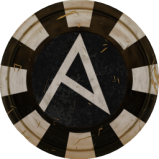

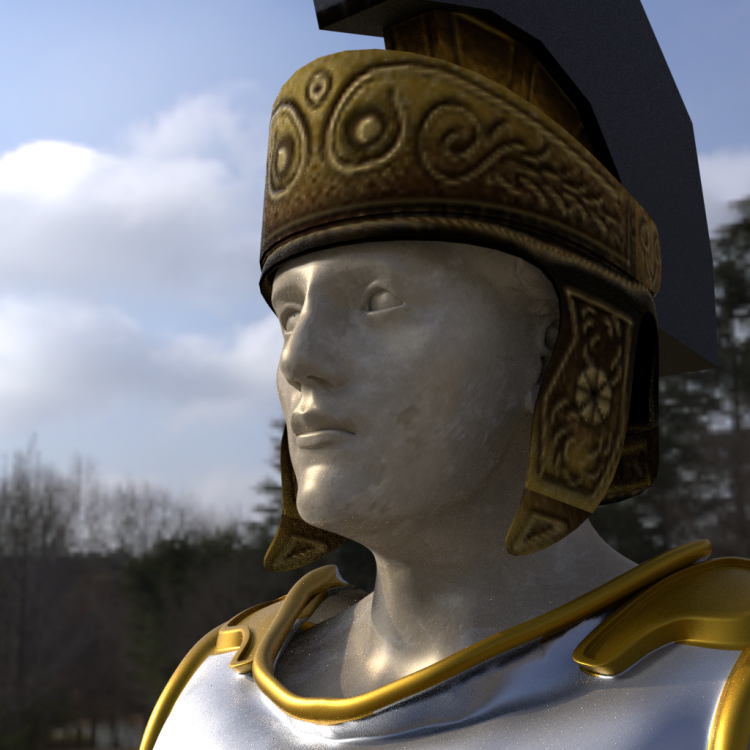
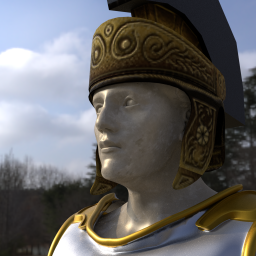
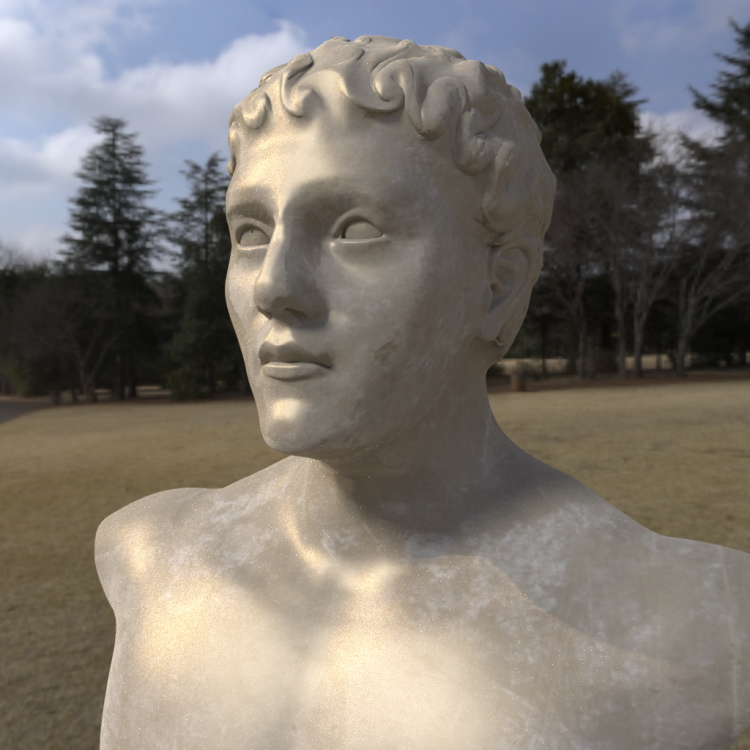


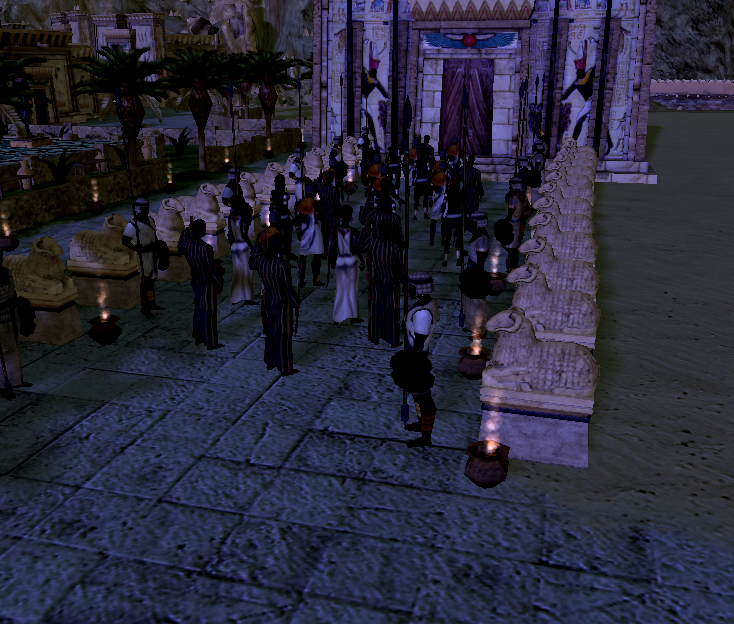
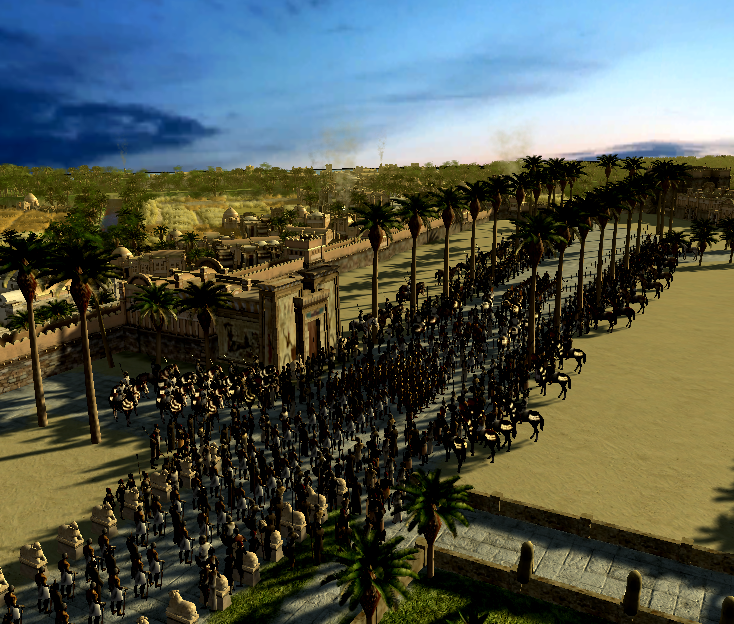


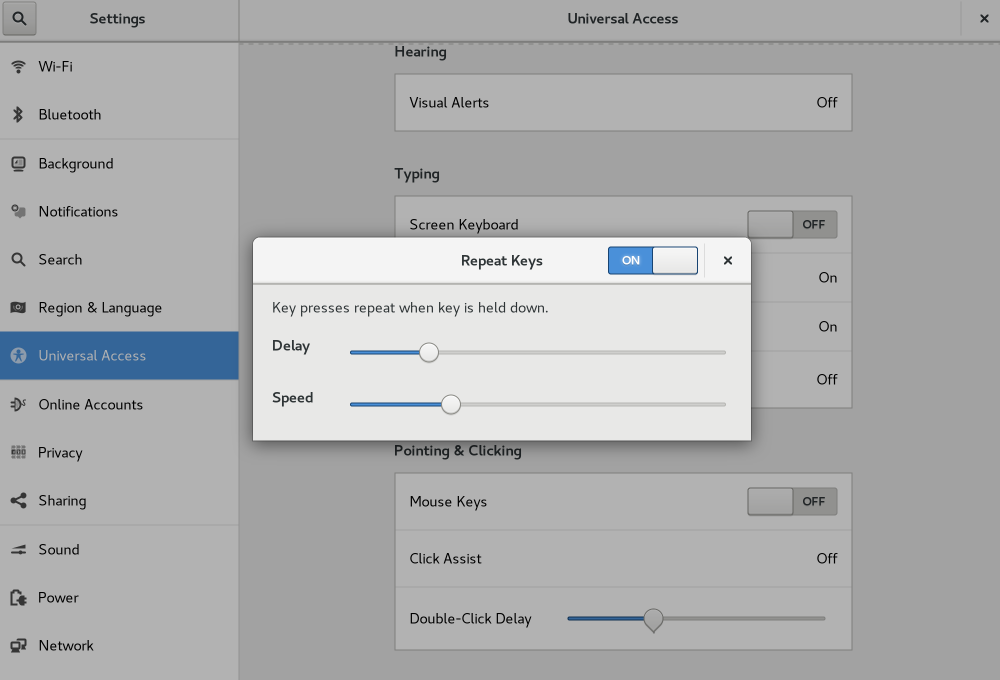
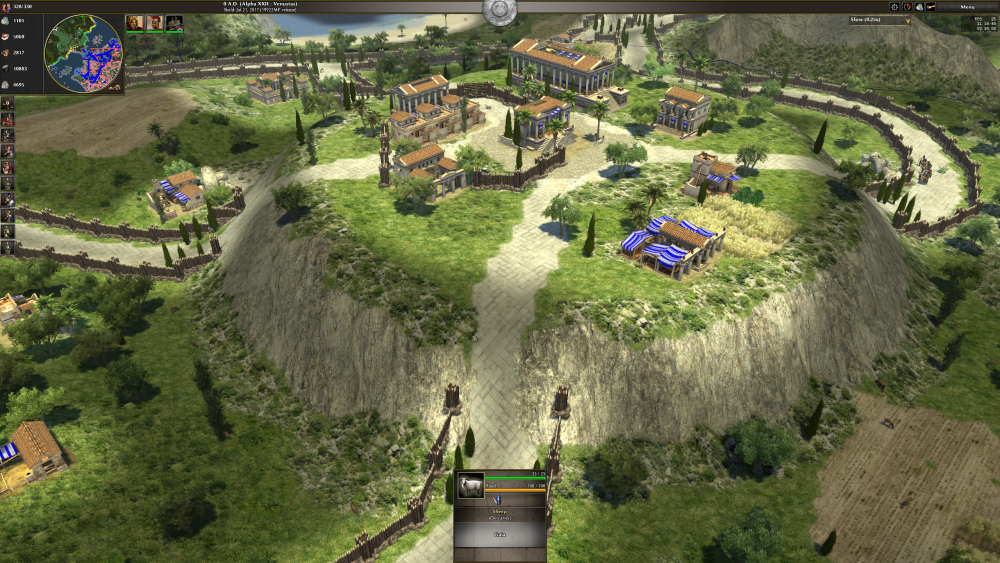
.thumb.png.ce58cea22940c255f5b0a735d5abee36.png)


